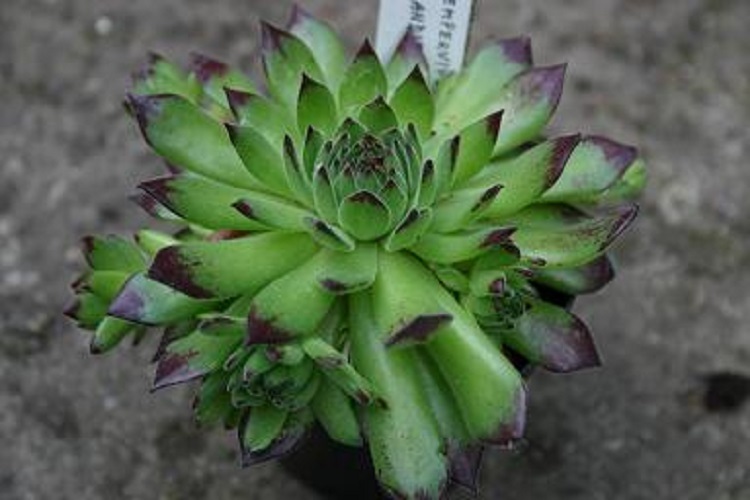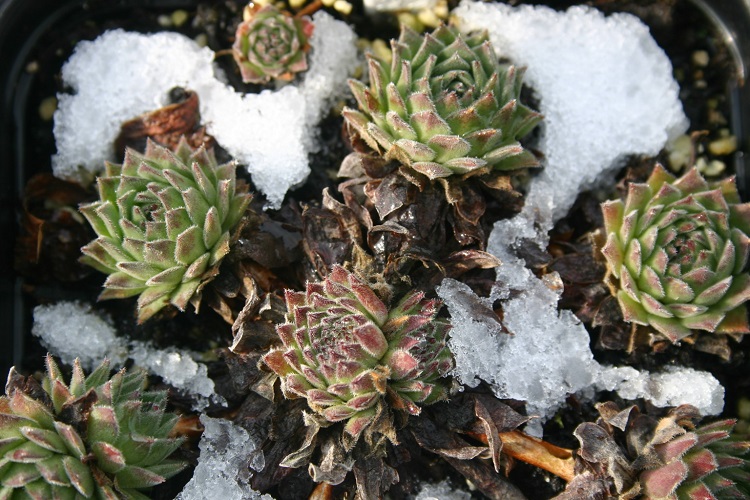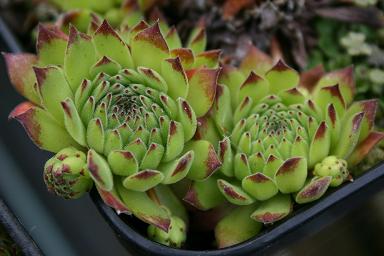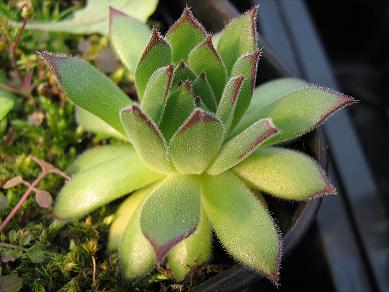 |
A large growing species from the Alps. I got it from Simon Bond at Thuya Alpines. In their 1986 catalogue, Chiltern Seeds wrote: "This fine and rather rare specied from the Alps forming rosettes, that can be up to 9ins across, of brown tipped, dark green, fleshy leaves. The yellow flowers, the largest of the genus, are produced in early summer and can be 2 ins or more across." Plants of the World online says: "The native range of this species is SSW. & W. Central Alps. It is a succulent perennial and grows primarily in the temperate biome." World of Succulents says: "Sempervivum grandiflorum is a small, hardy succulent that forms rosettes of green leaves tipped with red and covered with short, soft hairs. The rosettes can reach a diameter of 6 inches (15 cm) and freely produce offsets on spreading leafy stolons, forming a dense mat over time. The hairy leaves are almost sticky to the touch. The flowering stem can grow up to 8 inches (20 cm) tall. The flowers are star-shaped, 10- to 15-merous, and can reach a diameter of 1.2 inches (3 cm). They have yellowish petals with a basal purple spot and appear in summer in clusters on a leafy stalk that can grow up to 12 inches (30 cm) tall." |
|
| 4th June 2005 | ||


